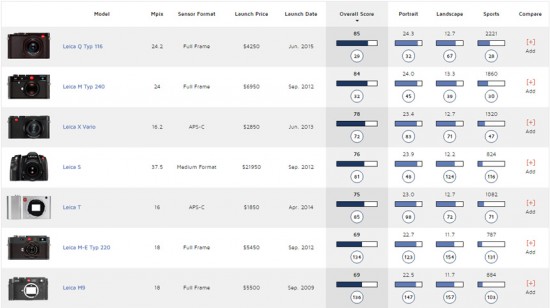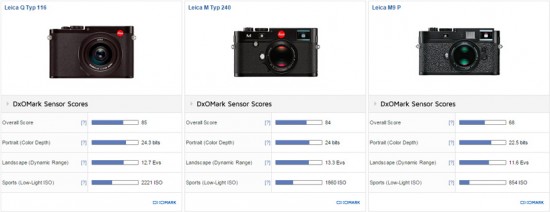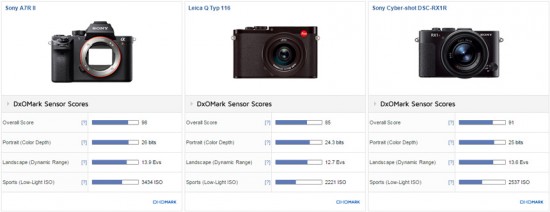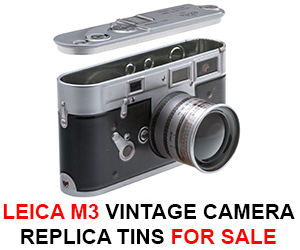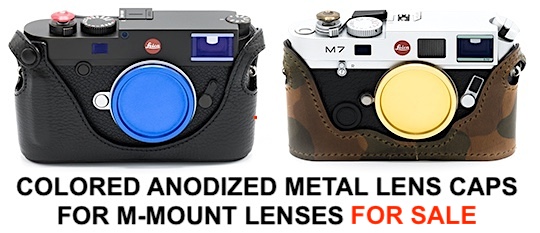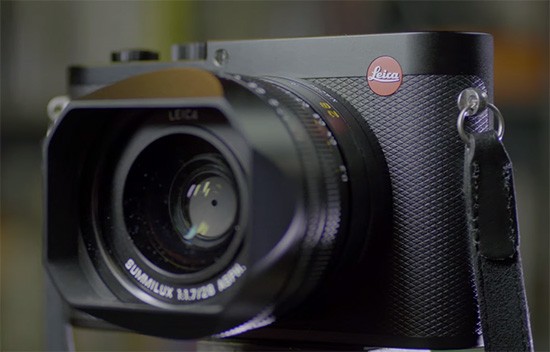
We already saw a glimpse of the Leica Q DxOMark test score few days ago. The full test results are now available online:
Excellent low-light score
The new Leica Q achieved an overall DxOMark score of 85 points that comprises an excellent score of 24.3 bits for color sensitivity, a slightly lower-than-expected 12.7 EVs dynamic range at base ISO, and a good low-light ISO score of 2221 ISO. It is the best low-light, high-ISO performance of any Leica to date, albeit only a slight improvement over the full-frame Leica M.
Leica Q Typ 116 vs Leica M Typ 240 vs Leica M9 P: impressive high-ISO DR
Although the Leica Q’s DxOMark score of 85 is very good, it is only just above the Leica M at 84 points, so the overall performance of the two are on a similar level. But if we look at the data in detail, there are some interesting differences. And it comes as little surprise to see that the CMOS sensor dynamics of both models are well above the still highly-regarded CCD-based Leica M9-P (and M9). With a lower base ISO of ISO100 (against the ISO200 of the Leica M), the Leica Q has a little extended color sensitivity, but it is essentially the same through ISO400, where the lower noise means there’s a marginal improvement at higher ISOs.
Leica Q Typ 116 vs Sony Cyber-shot DSC-RX1R vs Sony A7R II: strong performance
There aren’t many high-end full-frame rangefinder style models to compare with, but the 24-Mpix Sony RX1R model is arguably the closest rival. We’ve also compared the Leica Q with the Sony A7R II — not that it is considered a direct rival, but more that it’s presumed to have the same sensor as the new RX1R II. In this company the Leica Q struggles a little, but it’s not far behind the performance of the RX1R, though Sony has achieved some significant gains with the sensor in the A7R II. At lower ISOs, color sensitivity is marginally behind the RX1R, but that changes at ISO1600, where the Leica Q has a slight advantage. Against the A7R II, however, it’s clear that the new Sony sensor has substantially lower noise and improved color depth at all ISOs settings.
Both Sony models have a stop or so extra dynamic range at base, but that advantage is soon eroded and lost by ISO800, where theLeica Q overtakes the RX1R and even comes close to the A7R II. However, an additional boost in sensor dynamics at ISO1600 in theA7R II improves the dynamic range to around a stop over the Leica Q up through the maximum ISO setting. Following a pattern similar to the results for color depth and dynamic range, noise levels are close between the Leica Q and RX1R, with the latter having around a +0.3-stop advantage, but the Leica Q trails the newer A7R II by nearly a stop.
DxOMark’s conclusion:
The Leica Q is a thoroughly modern and likable camera with a very impressive sensor. While it is close in performance to the CMOS in the Leica M, it is clearly a different sensor with slightly lower noise and improved high-ISO dynamic range. While that has implications for the dynamic range at base ISO, it remains competitive and offers excellent, nuanced color and low noise. If the field of view of the fixed 28mm focal length lens appeals, then anyone who likes working with the Leica M series will surely be tempted by the performance of this new model.
